





The Surrealism Website
Paul Delvaux (1897-1994)

Paul Delvaux was born in Wanze, Belgium. His first recorded works were from 1922, and were Post-Impressionist and Expressionist in style. In 1934 he first came across the paintings of de Chirico, Magritte and Dali at the Surrealist exhibition in Brussels organised by the Albert Skira, the publisher of the surrealist magazine Minotaure edited by Breton.
Delvaux was very affected by this exhibition and in 1937 he created, perhaps, his first recognisably 'surrealist' painting 'Afternoon Mass', though he never joined or associated himself directly with the group.
Later that year he painted 'Women Trees' and this consolidated his new style of working, which he continued for the remainder of his long life. He particularly depicted nude or partially clothed women often in classical or city landscapes. Unlike de Chirico he uses a precise perspective, but he creates strange atmospheres, in which the women seem detached from surrounding events or the gaze of the clothed male figures around them.
He often created night scenes lit by a crescent moon. One of his best known works is his 'Sleeping Venus' of 1944. His style remained consistent and he merely explored variations on his favourite themes.
Delvaux recounted how in his childhood he was influenced by a particular book "My overriding passion was the books of Jules Verne.... I was completely fascinated by the engraving of Riou showing Otto Lidenbrock the wise geologist from Journey to the Centre of the Earth." We find this figure by Edouard Riou in Delvaux's 'Tribute to Jules Verne' of 1971, but it appears in many of his works - the earliest being the 'Phases of the Moon', 1939.
He often modelled the male figures on himself and the females on his wife.
Delvaux was also very taken with trams and trains and these appear in many of his later works, an example being 'The Visit to Ephesus', 1973.
He was not particularly close to the surrealists nor to his fellow Belgian Rene Magritte, but his work was labelled surrealist by the art critics and dealers.
His paintings re-use the pictorial elements he earlier devised and thus they evolve and develop, rather than being individual fresh conceptions. This makes the often held view that Delvaux’ work is derived from dreams, or experiences of the unconscious, quite untenable. Instead each painting builds upon his earlier ones and arises from a thought out scheme, in which he tries new ways of fitting together the pictorial elements to which he was most attracted.
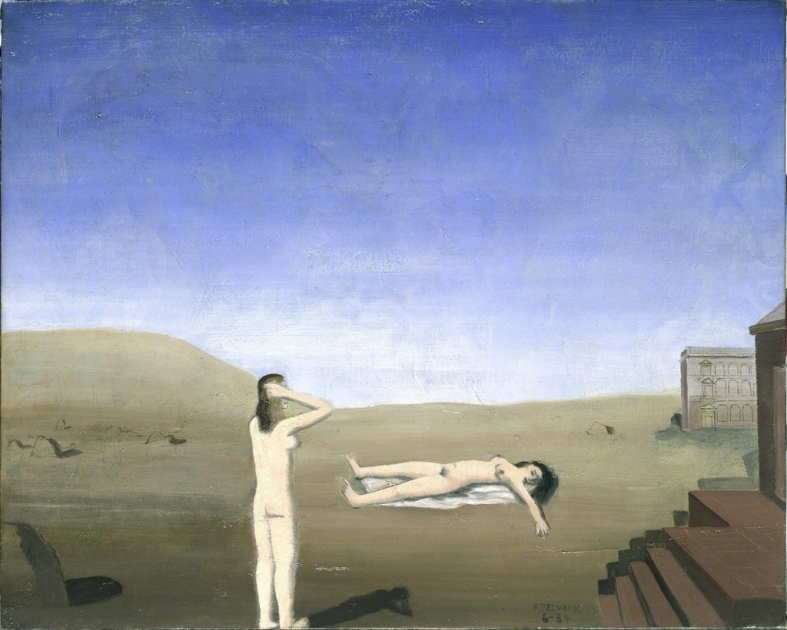
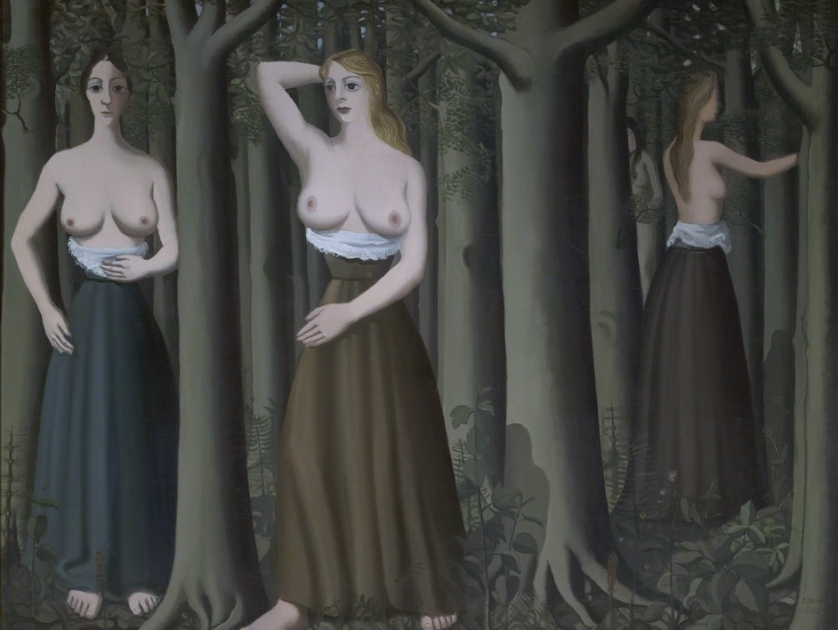
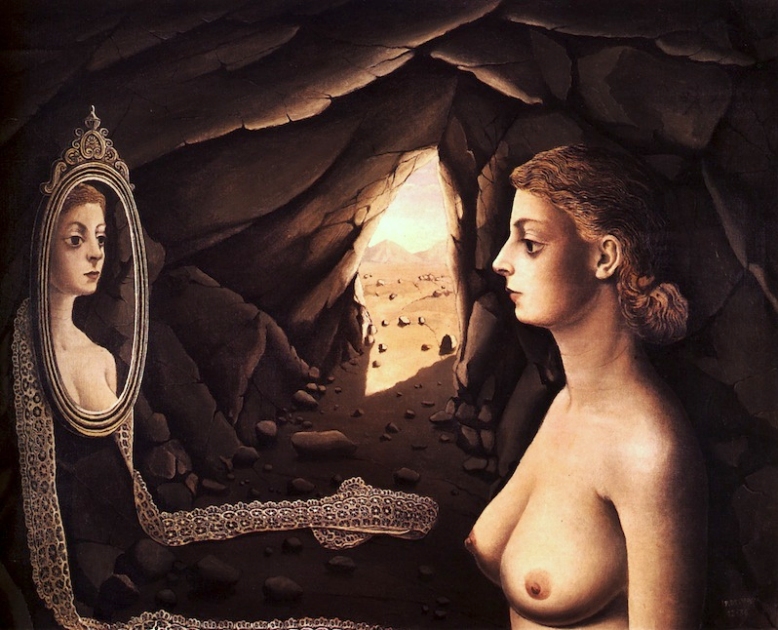
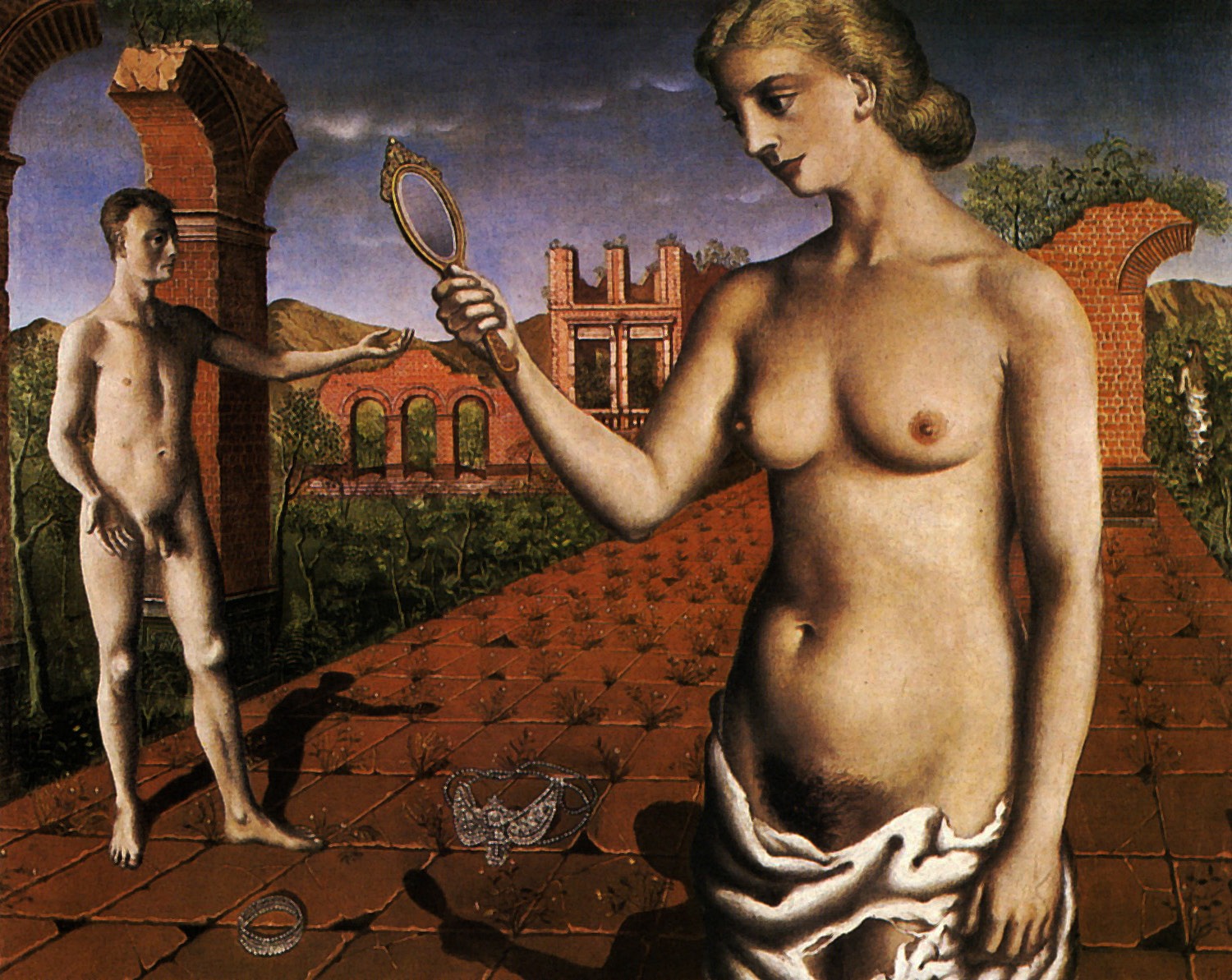
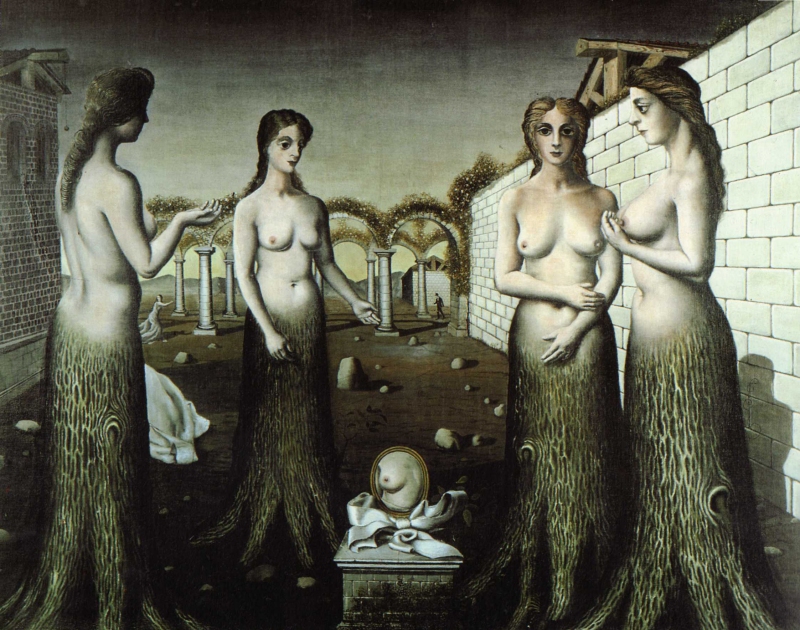
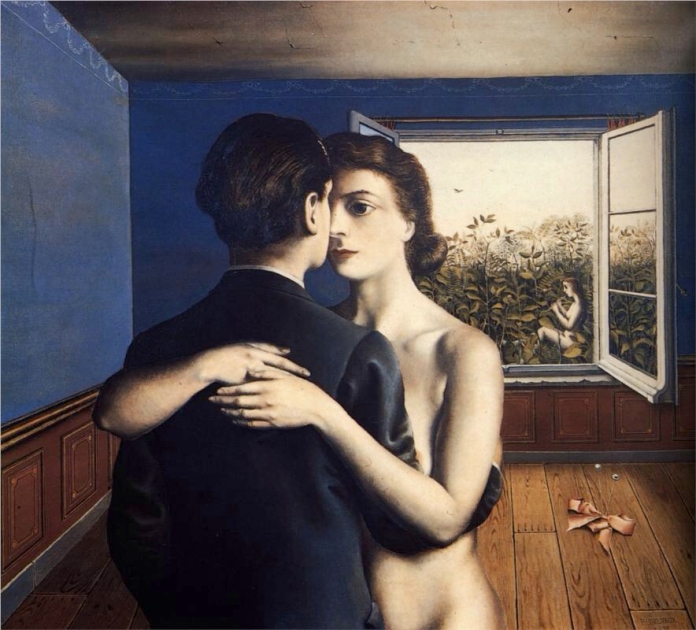
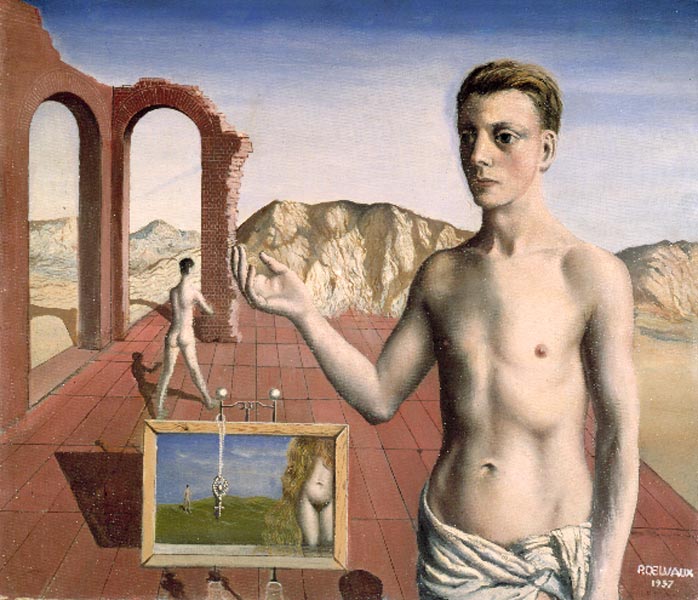
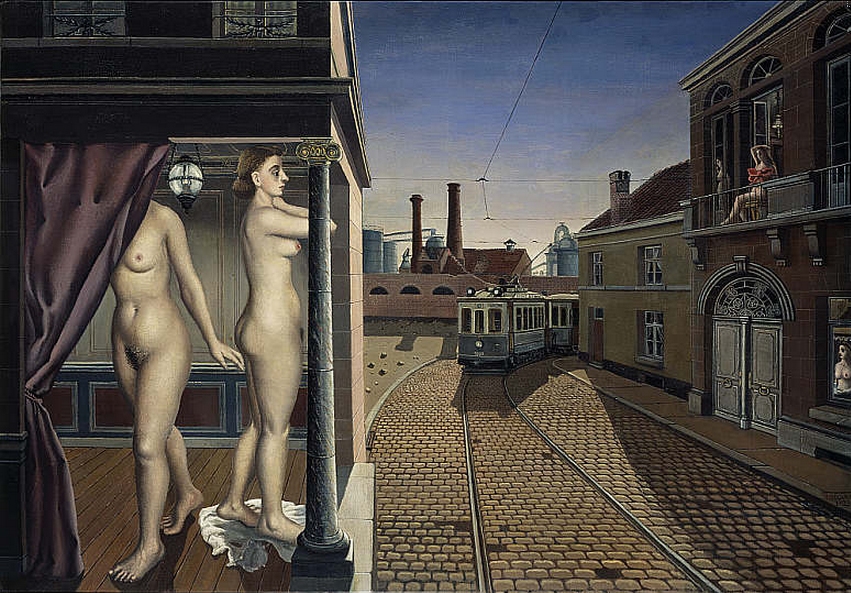
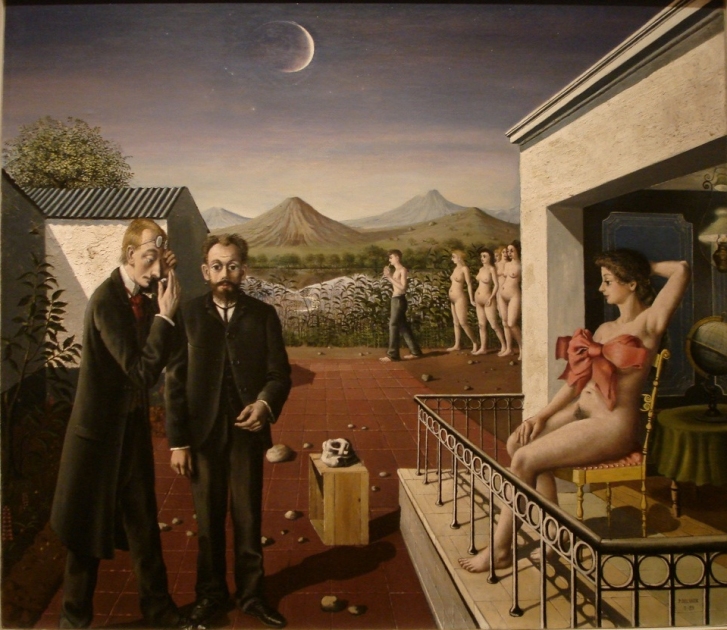
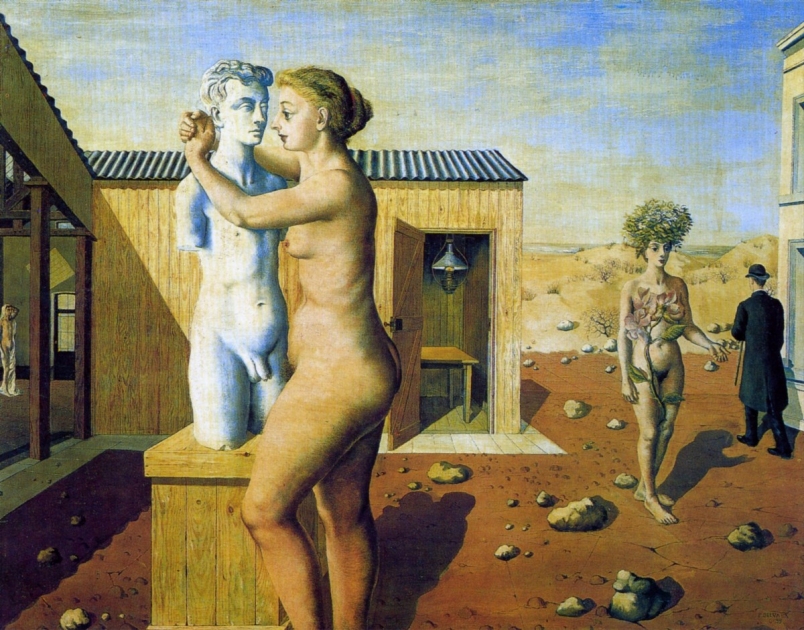
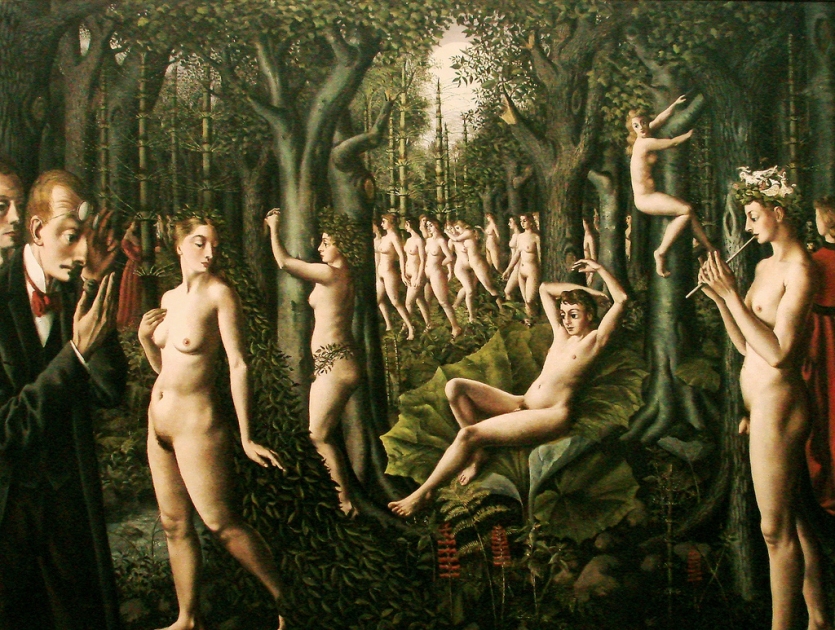
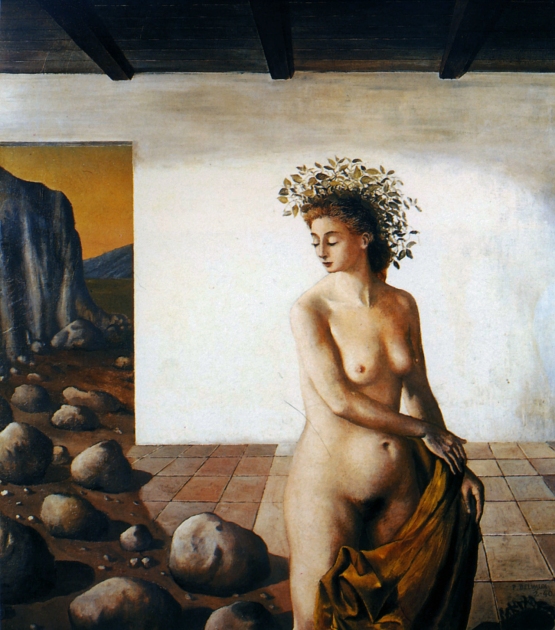
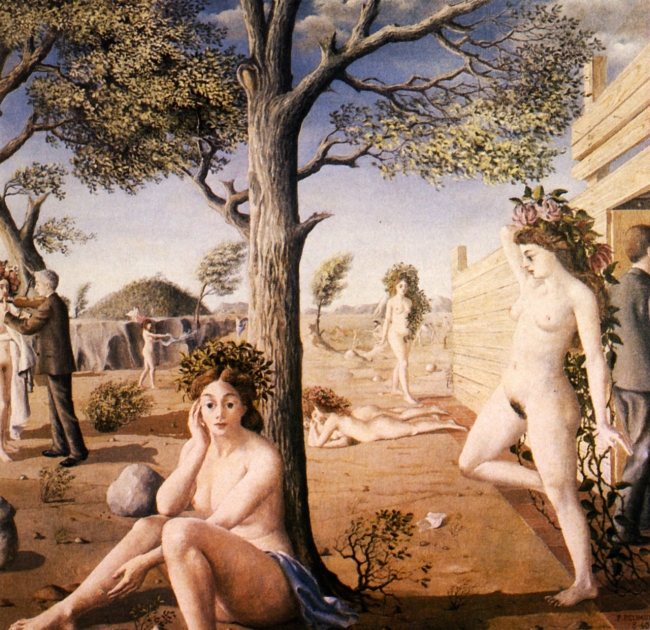
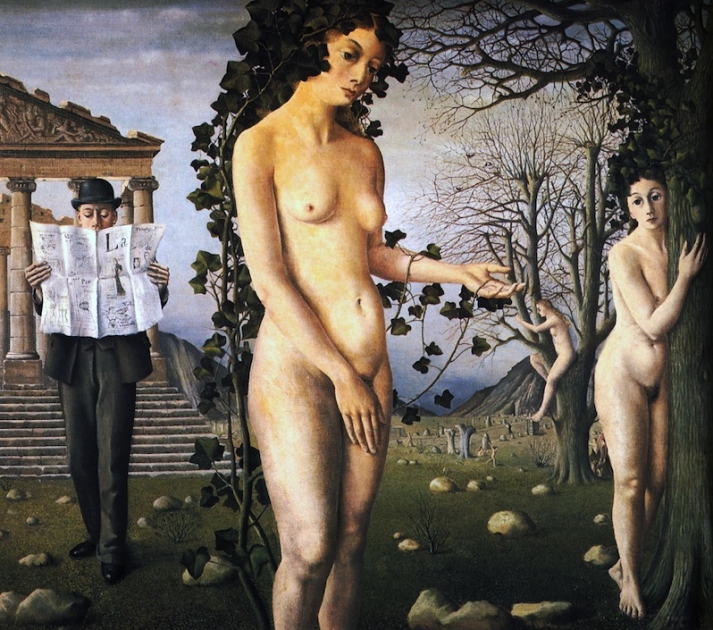

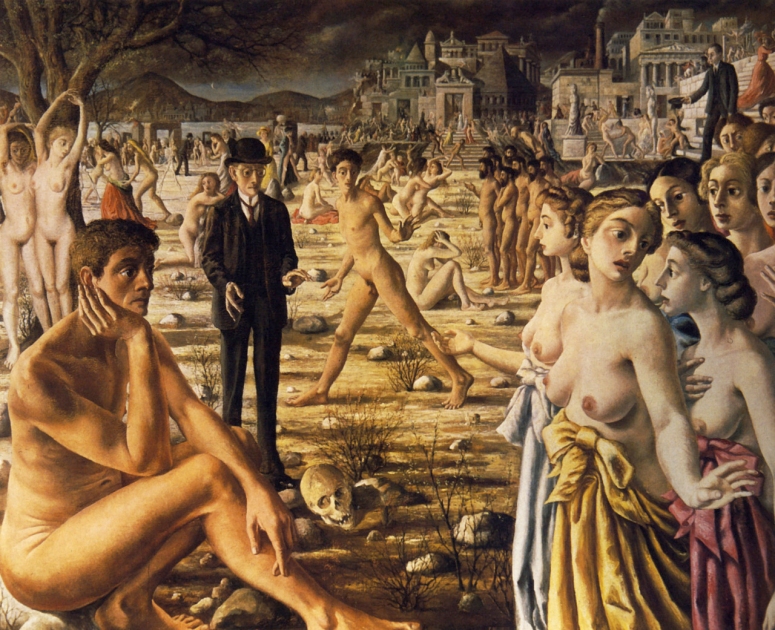
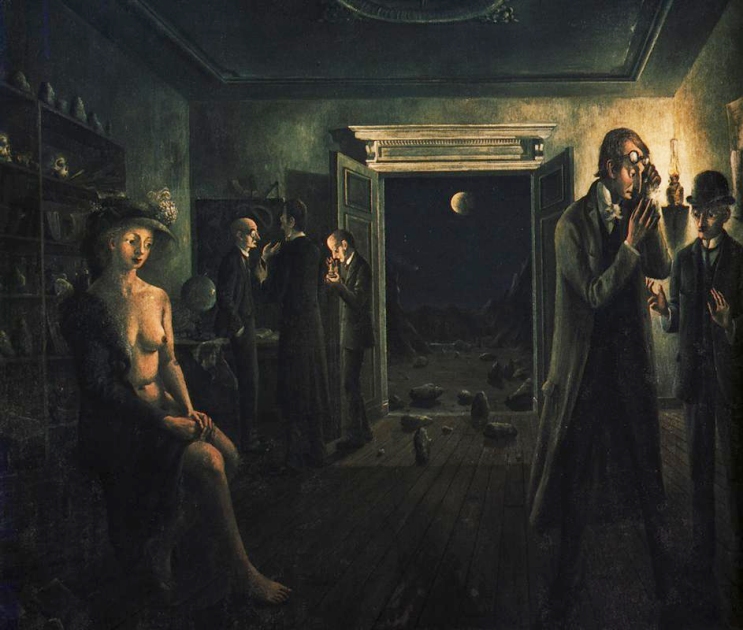
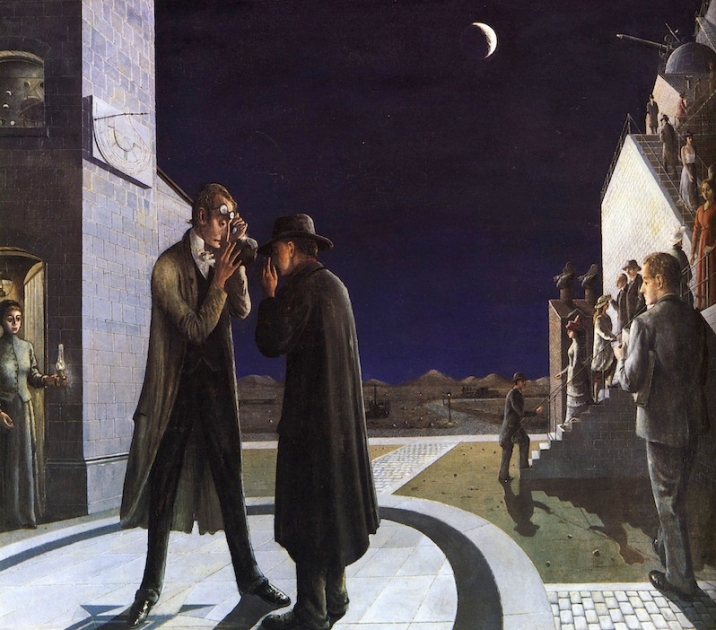
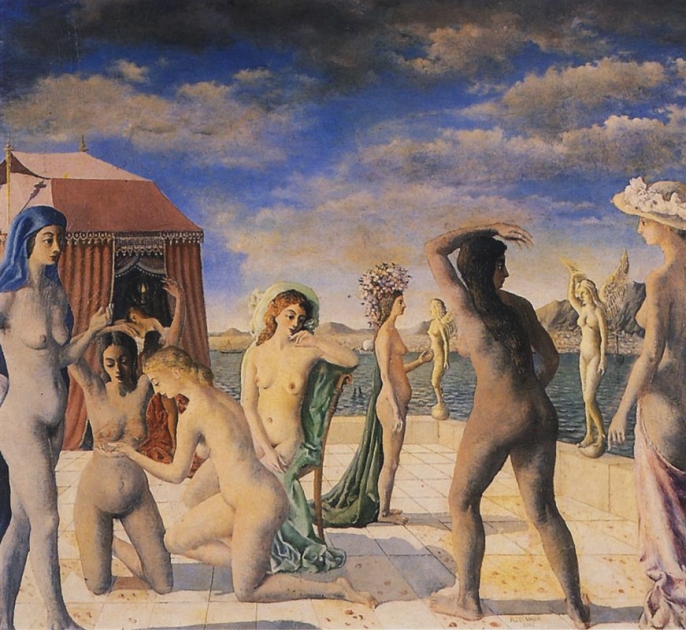
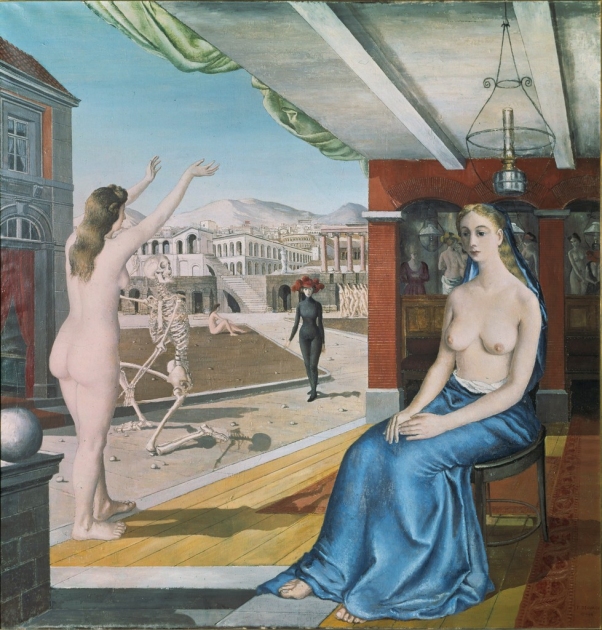
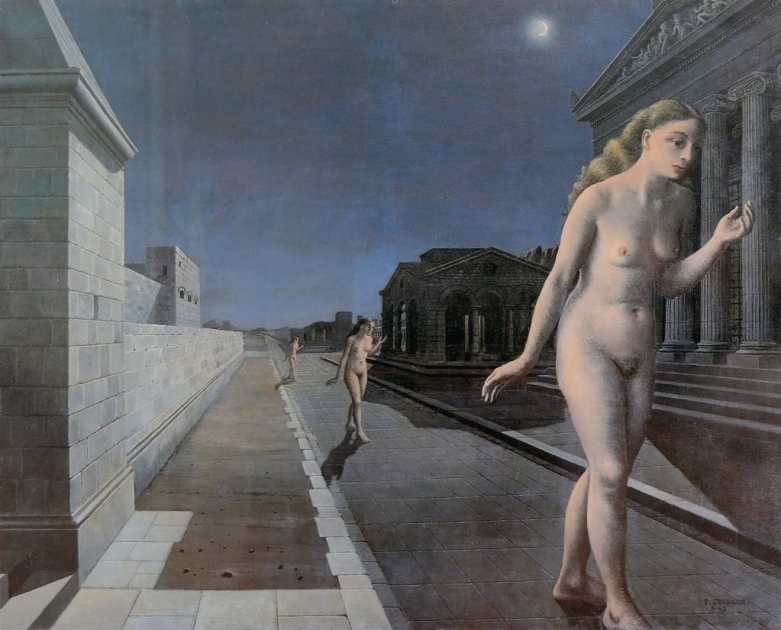
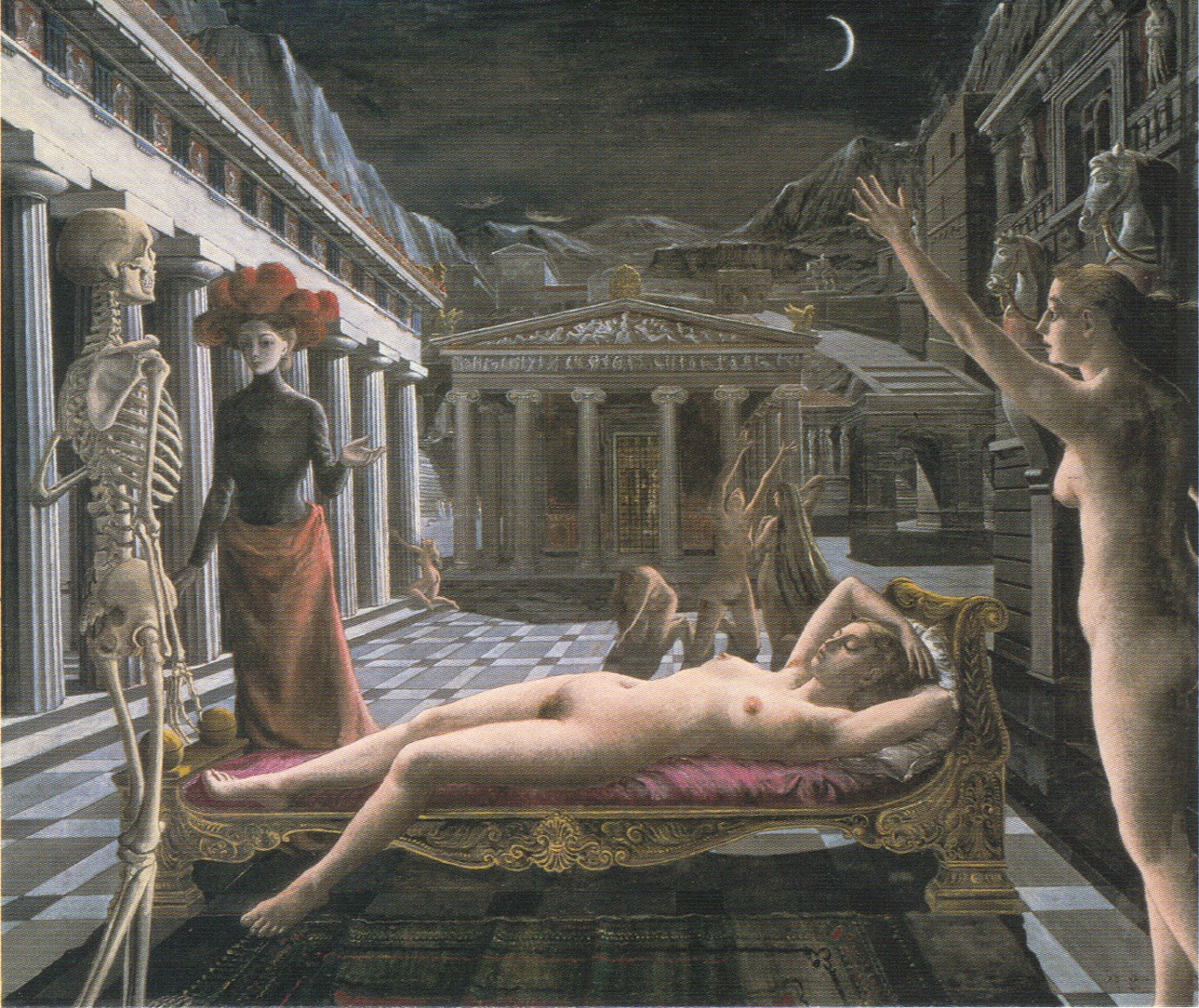
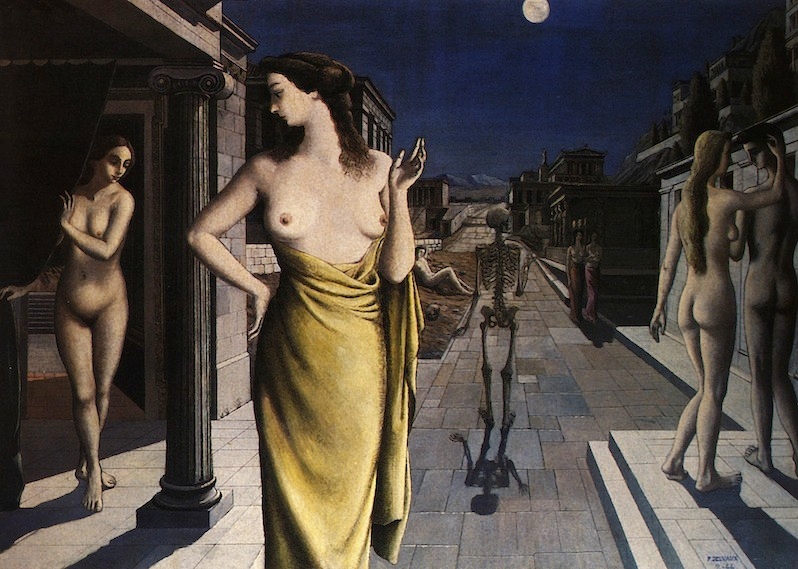
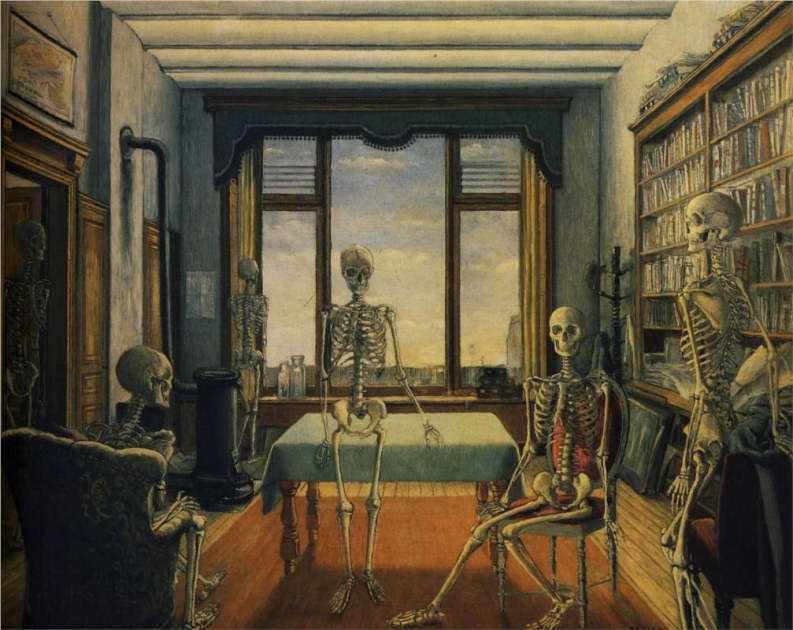
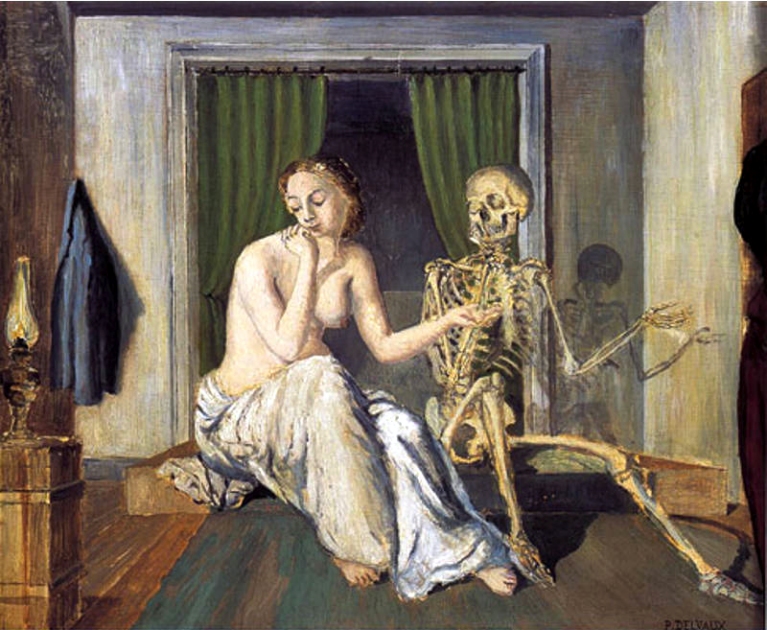
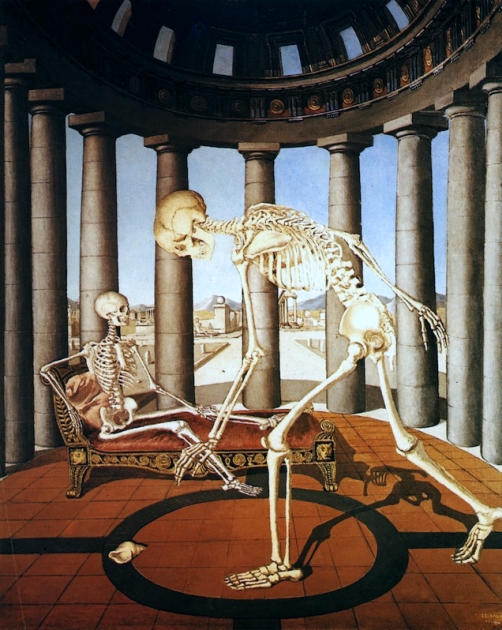
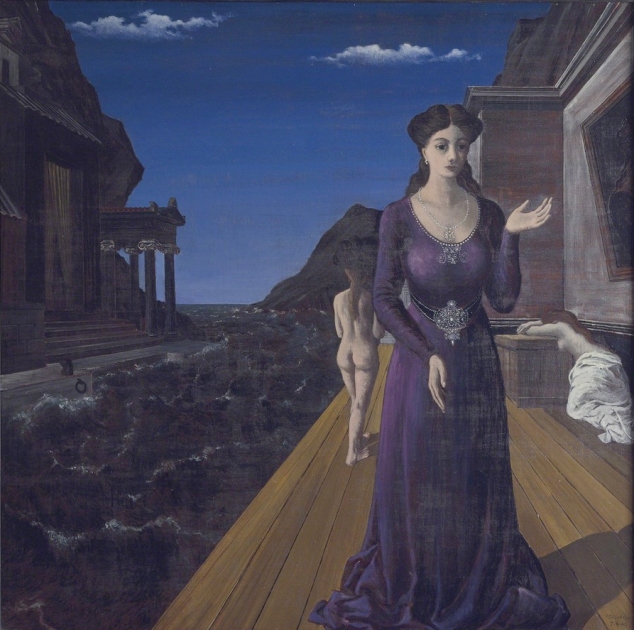
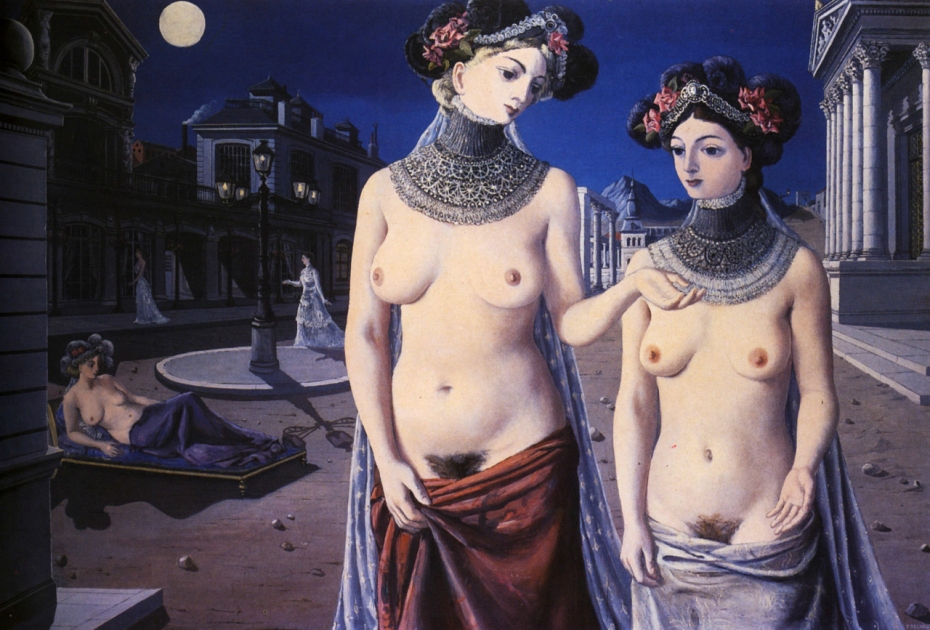
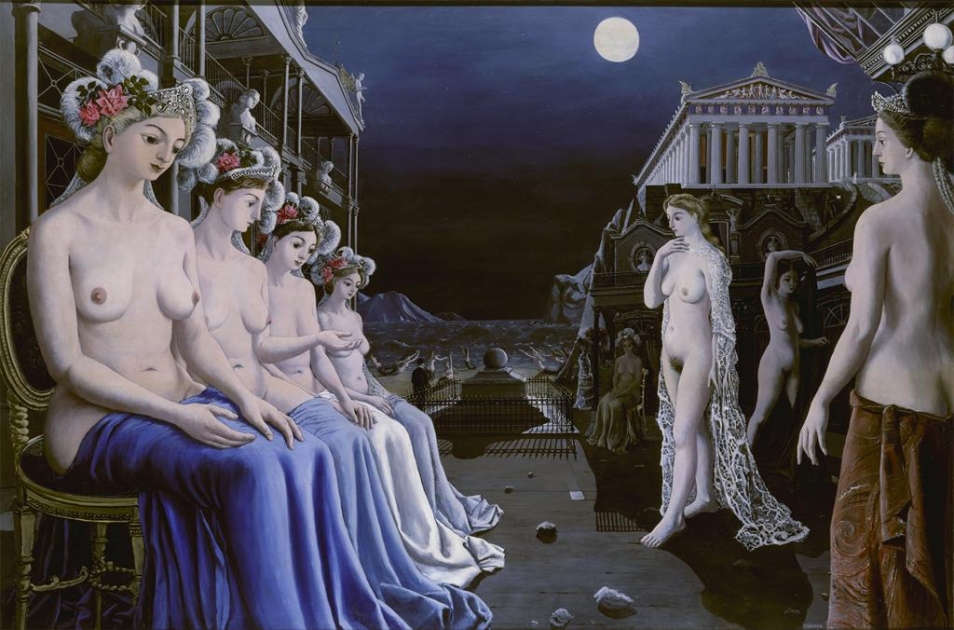
.jpg)
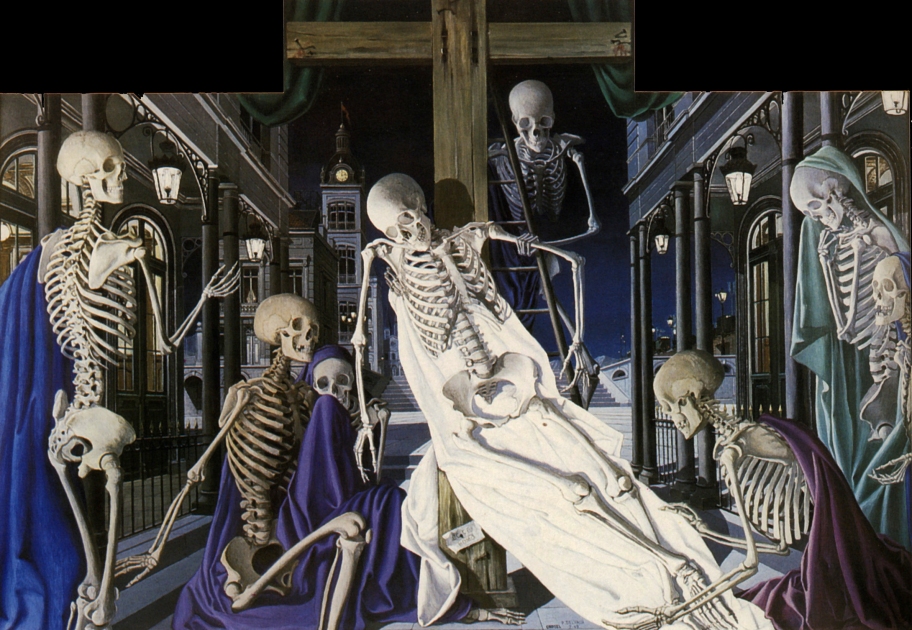
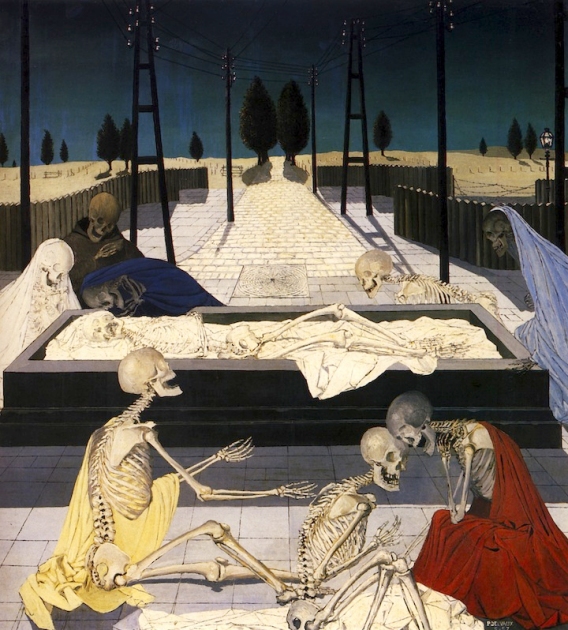
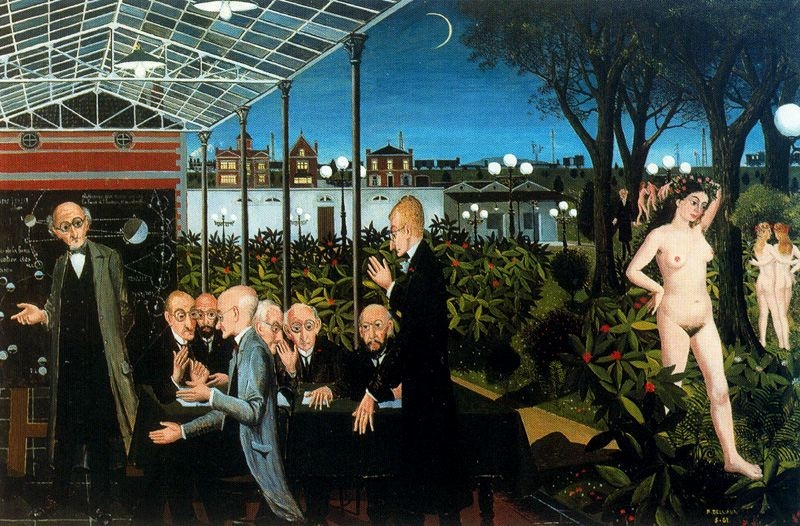
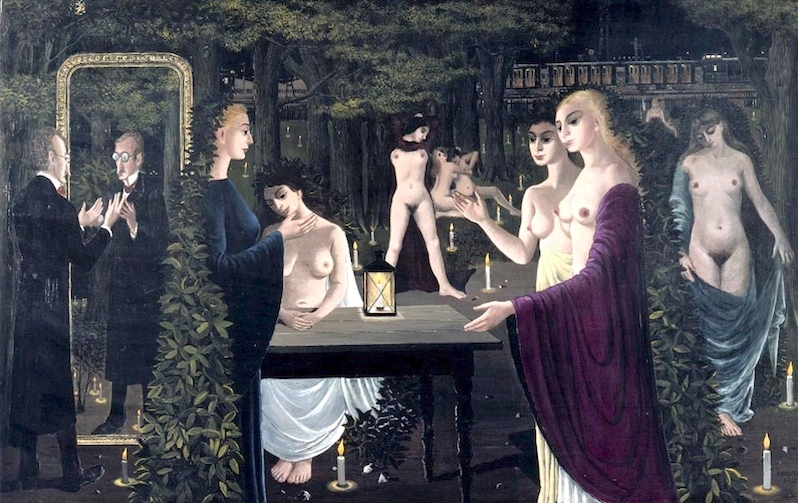
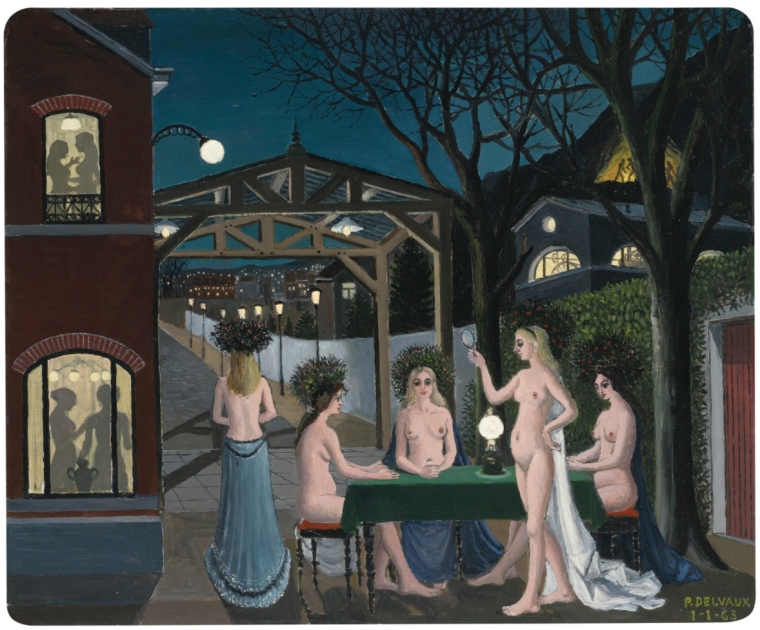
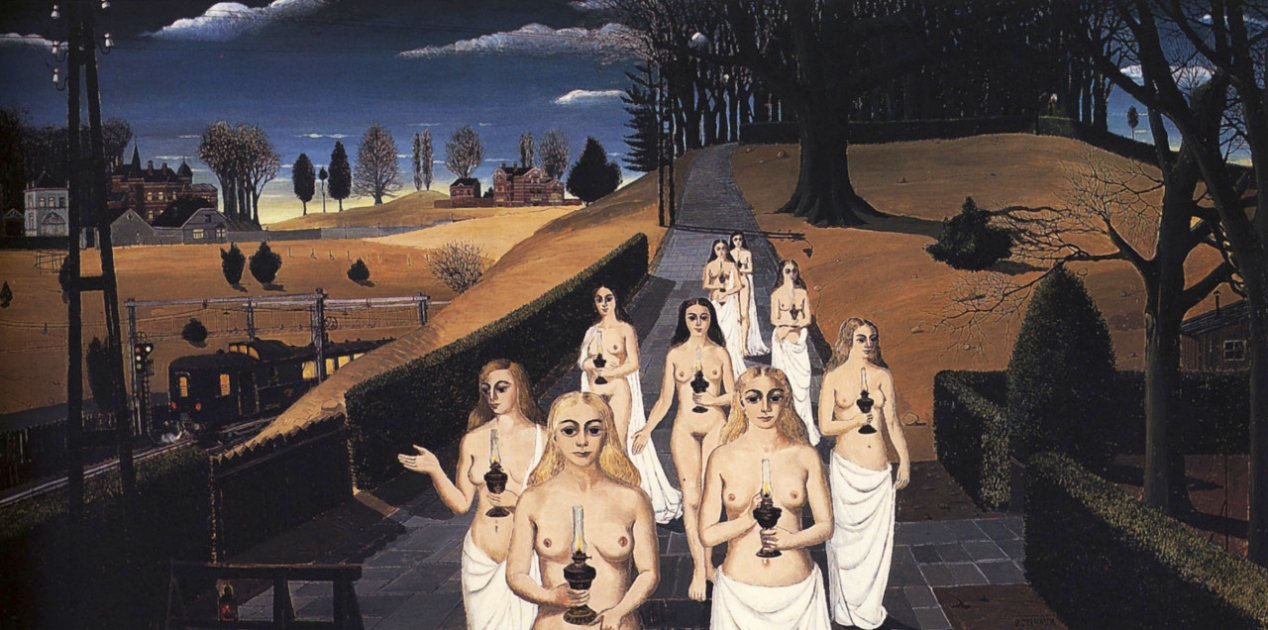
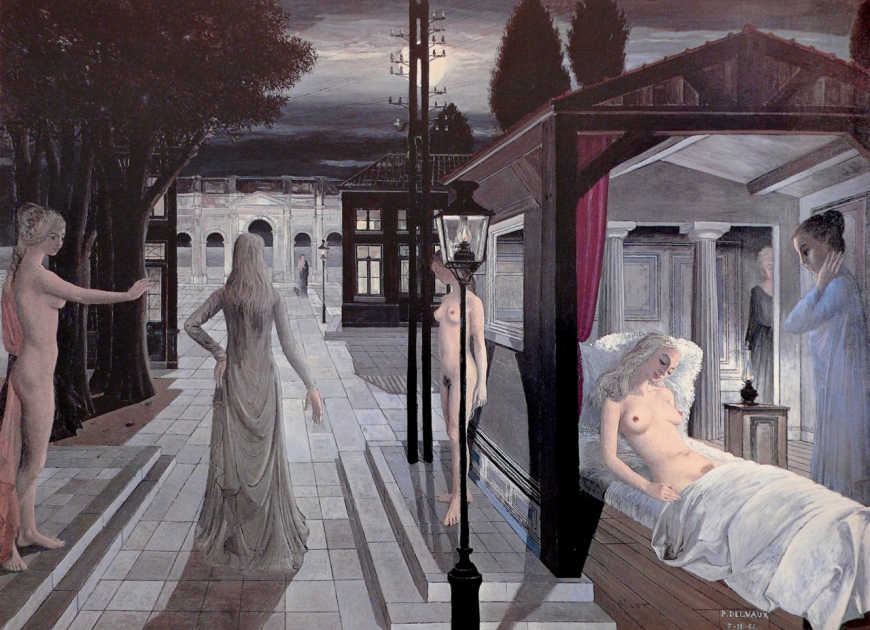
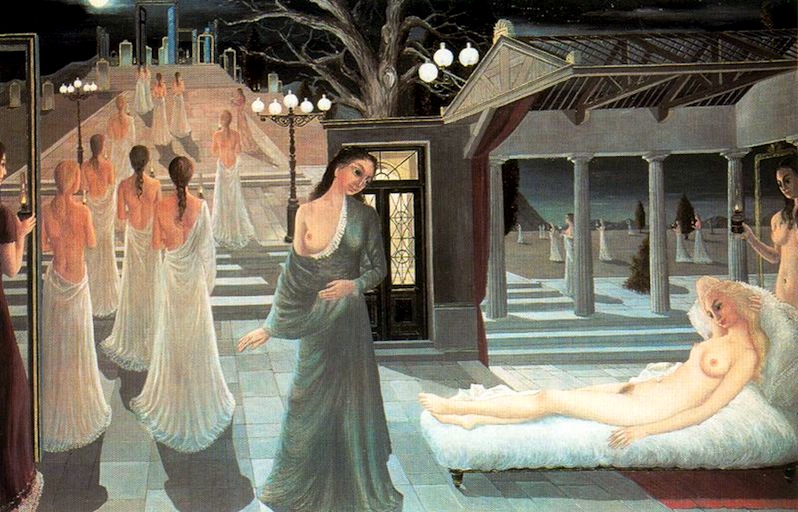
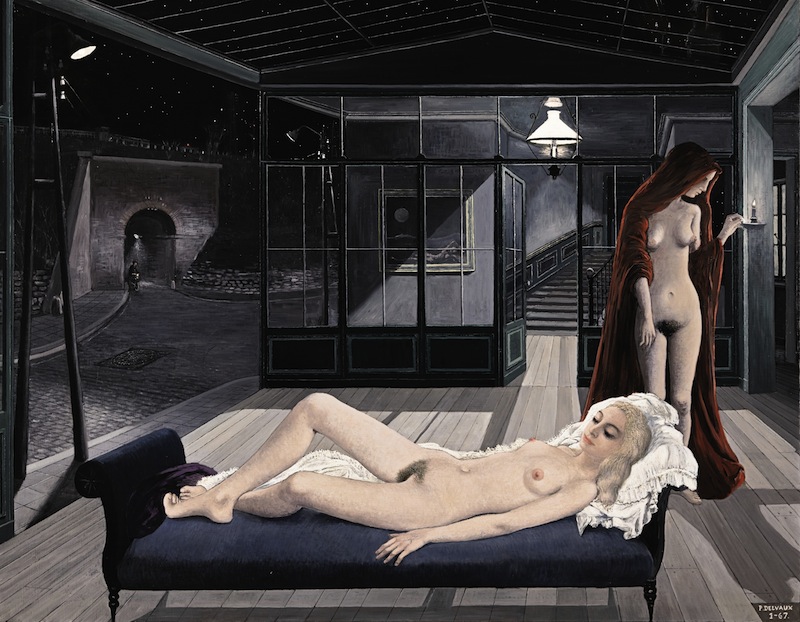
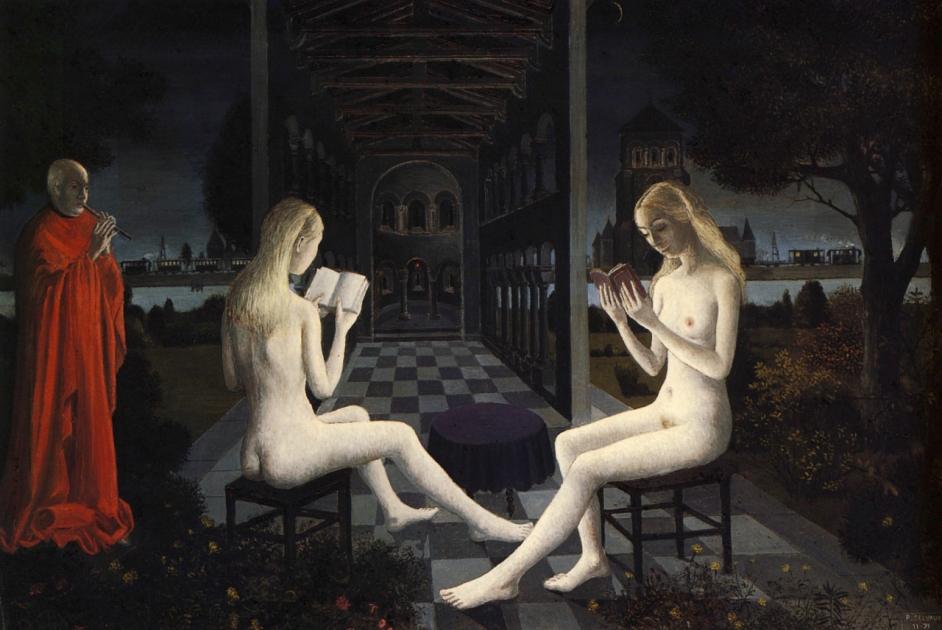
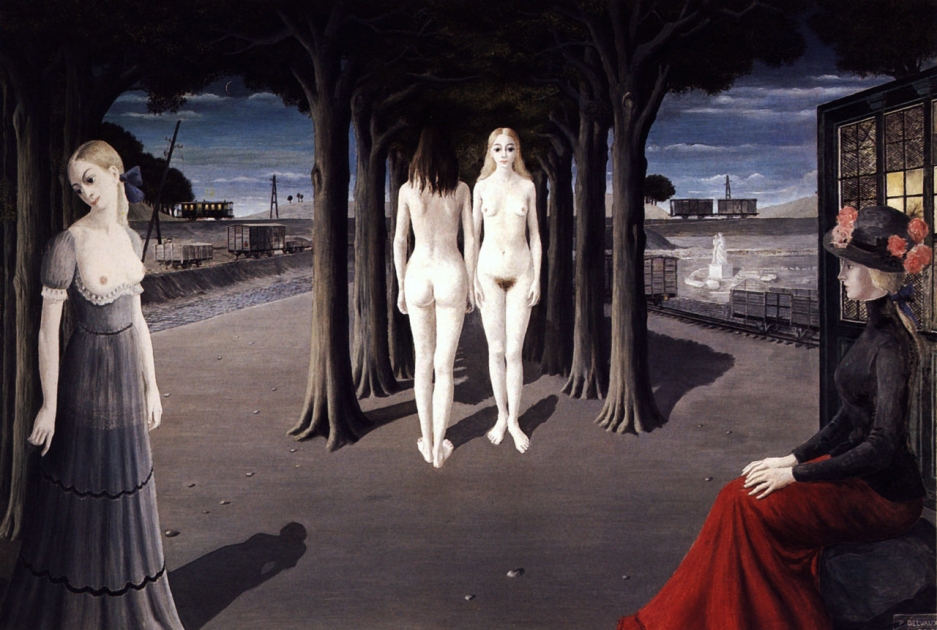
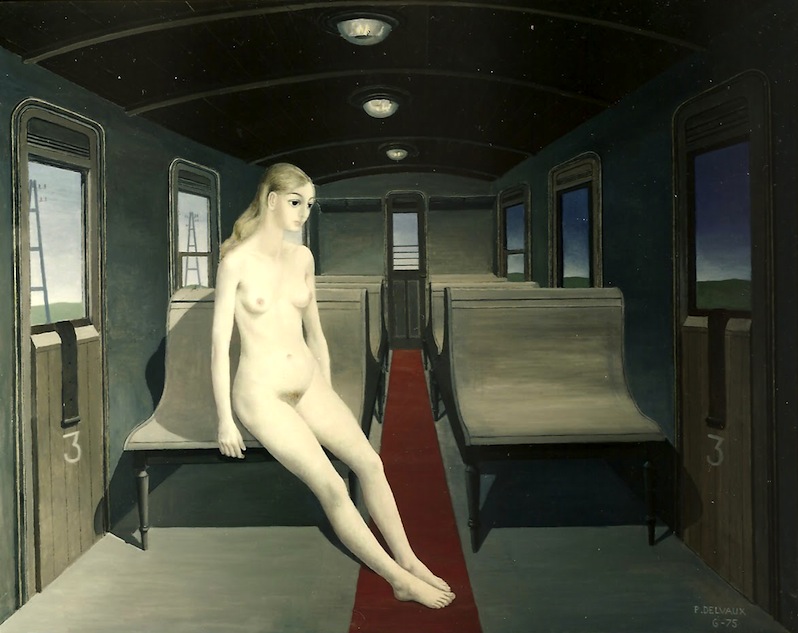
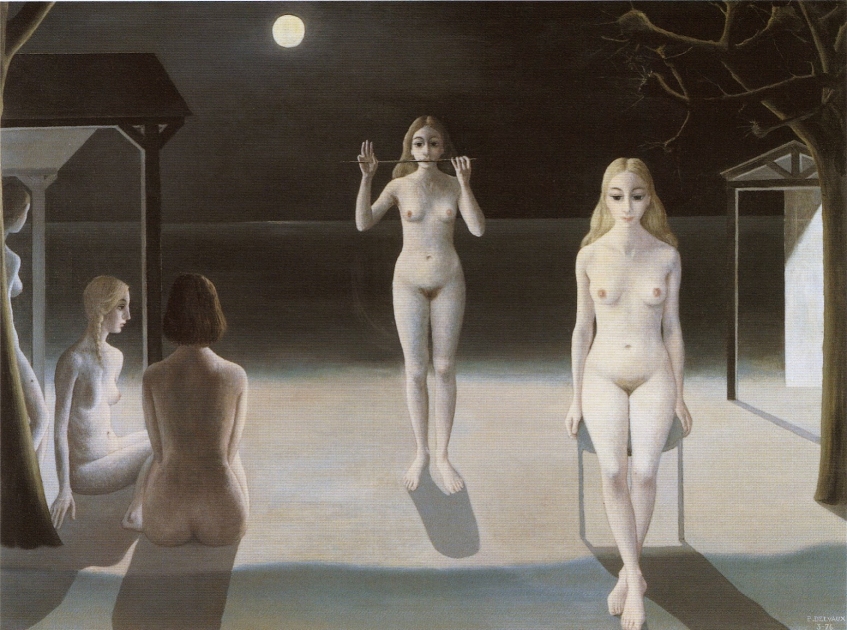




































.jpg)













